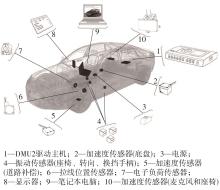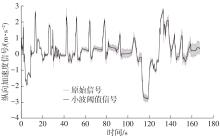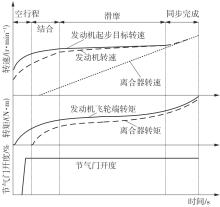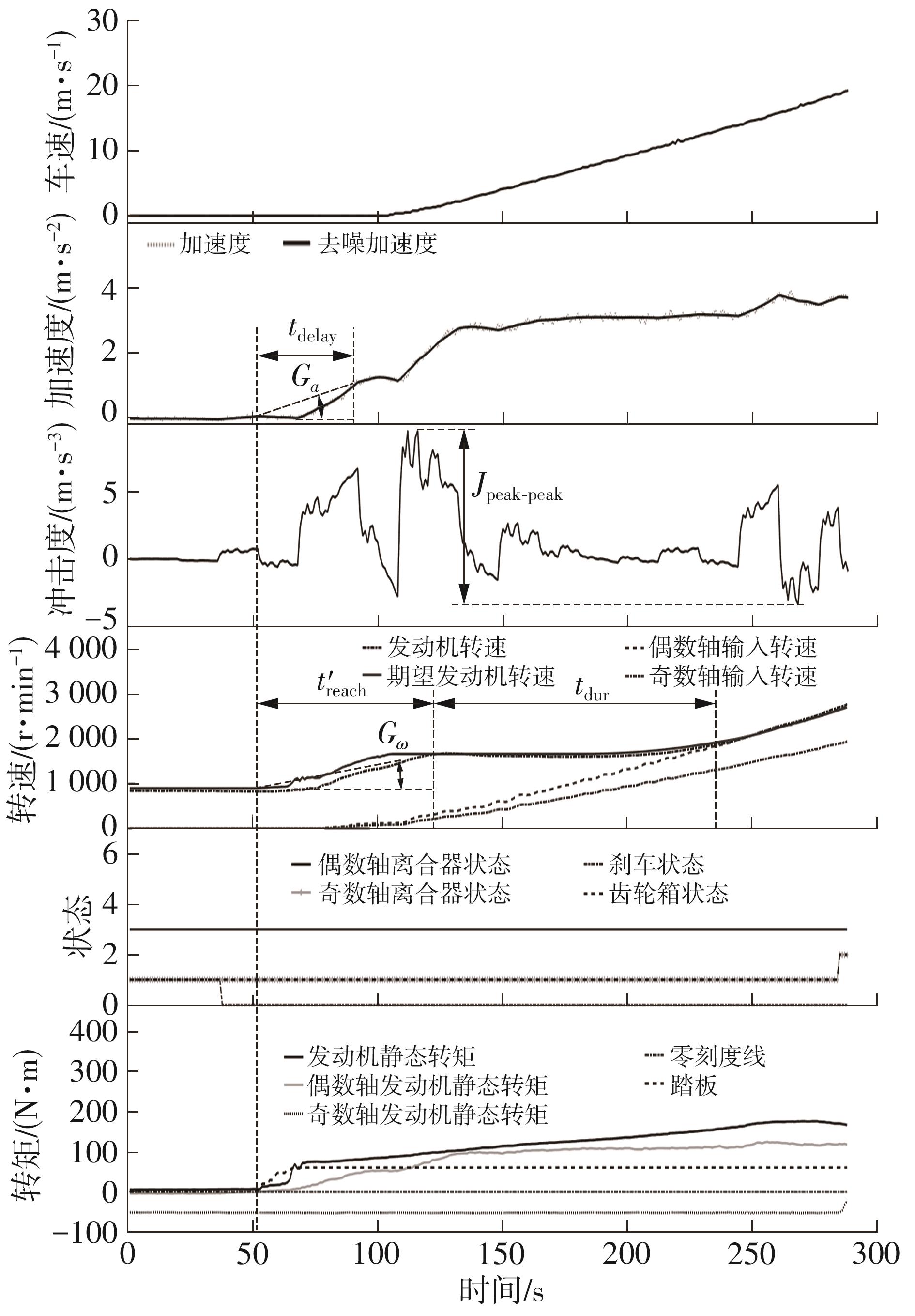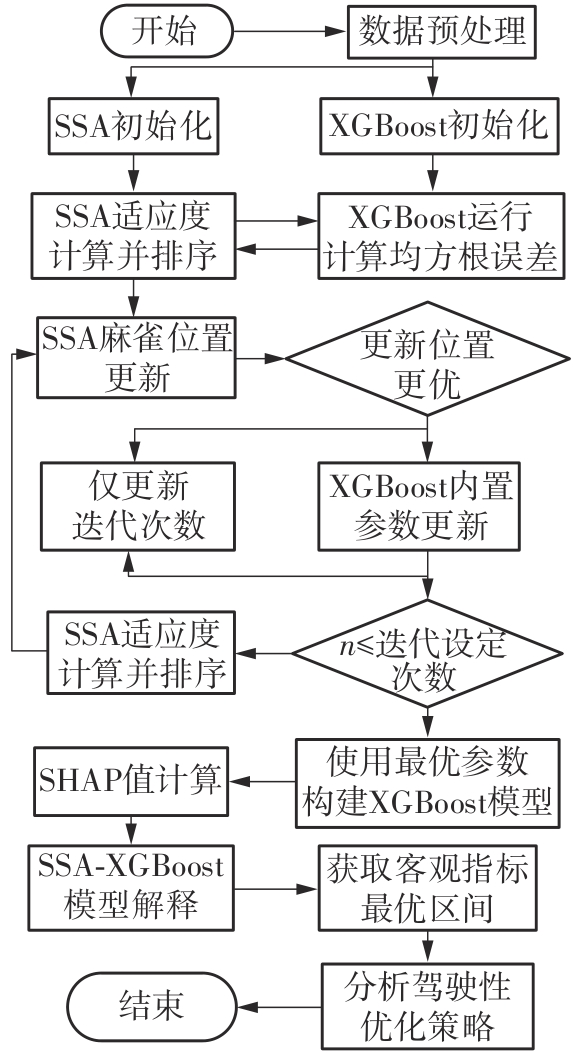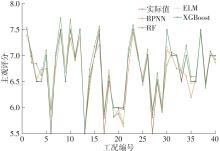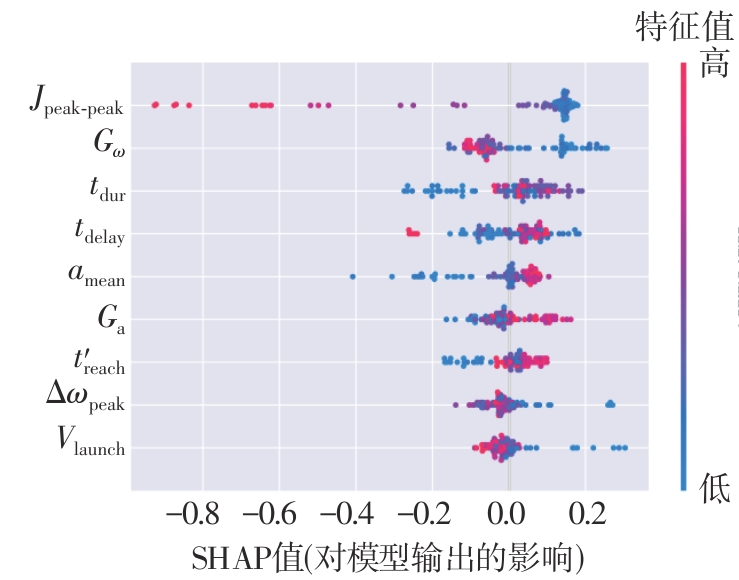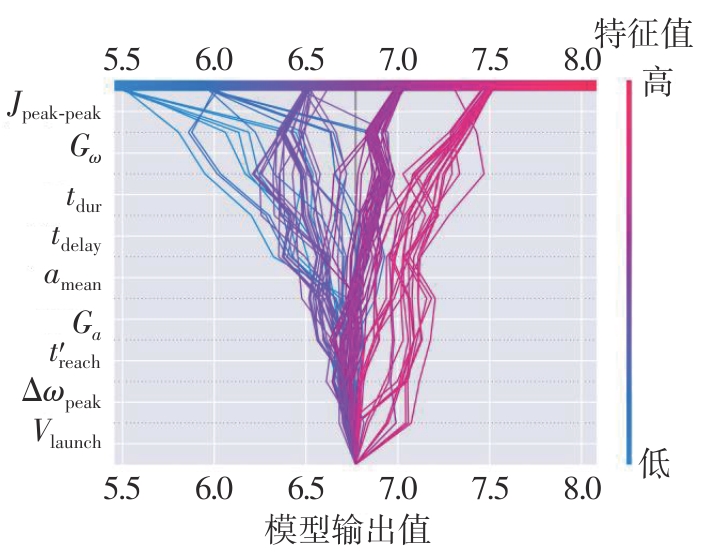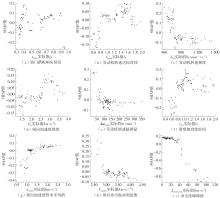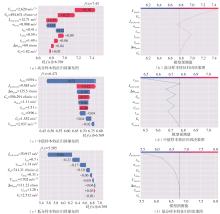华南理工大学学报(自然科学版) ›› 2025, Vol. 53 ›› Issue (6): 66-76.doi: 10.12141/j.issn.1000-565X.240243
驾驶性主客观综合评价方法在起步工况下的应用
- 武汉理工大学 机电工程学院,湖北 武汉 430070
Application of Subjective and Objective Comprehensive Evaluation Method of Drivability in Starting Conditions
WU Fei( ), SUN Xiankui, WANG Pengcheng
), SUN Xiankui, WANG Pengcheng
- School of Mechanical and Electrical Engineering,Wuhan University of Technology,Wuhan 430070,Hubei,China
摘要:
为提高驾驶性评价方法的准确性与可靠性,提出一种融合极限梯度提升算法、麻雀搜索算法与沙普利解释算法的主客观综合评价方法。该研究以车辆起步工况为目标,定义车辆起步工况下的9项客观评价指标,完善驾驶性起步工况的评价体系;提出以极限梯度提升算法双向映射客观评价指标值与主观评分,为避免驾驶性评价模型陷入局部最优解,采用麻雀搜索算法对极限梯度提升算法的核心超参数进行快速寻优,使得驾驶性评价模型在数据集扩充后具有自主迭代能力;最后利用沙普利解释算法对映射模型进行特征归因,量化客观评价指标对驾驶性评价的影响权重,构建兼具预测准确性、稳定性与可解释性的驾驶性综合评价模型。应用该方法,结合国内外主流驾驶性综合评价进行多次道路试验,对比分析结果表明:所提出的驾驶性评价模型的平均绝对误差、均方根误差和决定系数均优于BP神经网络、随机森林与极限学习机等主流驾驶性评价算法,映射准确性相较于其他方法明显提升,且该驾驶性综合评价方法具有一定的可解释性,对驾驶性评价中的主客观综合评价具有参考意义。
中图分类号:
